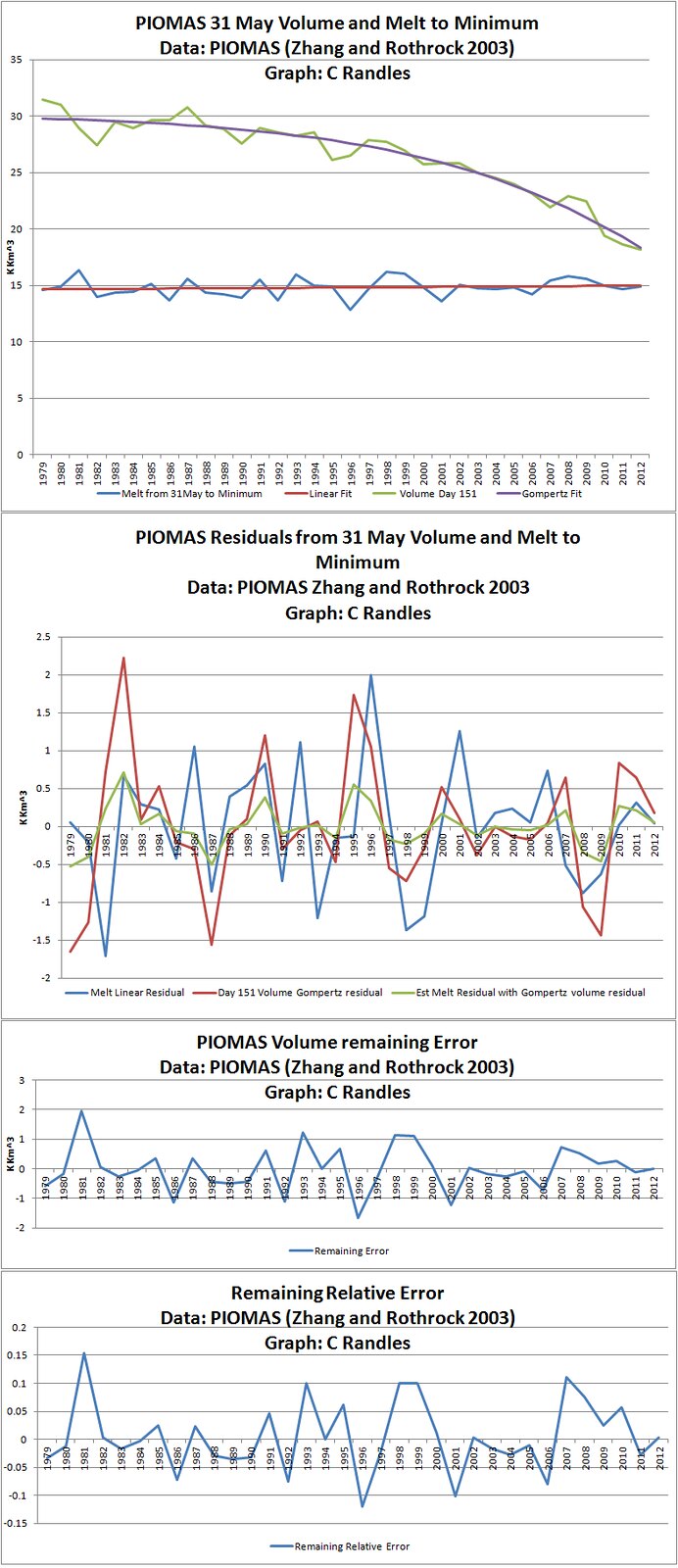Oops, I ran out of time to get my May poll votes in. Anyway, I will carry on regardless:
Averaging my 17.85 and Wipneus 17.75 gives 17.8 K Km^3 for day 151 volume.
Deducting a straight line extrapolation of day 151 to minimum volume reduction of 14.98 K Km^3 gives a minimum volume estimate of 2.82 K Km^3.
(Red line in first graph below reaches 14.98 for 2013.)
That is a simple estimate. But I think we can do better:

In the second graph I have plotted the residuals from trends shown in the first graph. In blue is the residual from trend of the melt from 31 May to minimum. If we could predict this, then we can get a better estimate of the melt from 31 May to minimum.
The other residual from trend in the first graph of volume at 31 May is plotted in red on the second graph. This shows some similarity of shape. So we can calculate a best linear scaling of the red line to make an estimate of the blue residual line we are trying to estimate. This is shown in green on the second graph.
When I do this I get a melt of 15.18 from the May 31 volume.
So using 17.8 as the estimate of May 31 volume gives a minimum volume estimate of 2.62 K Km^3
The standard deviation of the errors for the last 20 years using this method to forecast with only data to 31May of the year being estimated gives 0.85 K Km^3.
The third graph shows the errors rapidly declining. If I assume relative errors stay the same then the standard deviation of last 20 years relative errors is 0.08. 0.08*2.62 gives an error estimate of 0.21 K Km^3. The errors look more normally distributed like that - see 4th graph.
So a +/-2 sd range might be as low as 0.42 K Km^3, giving an estimate of 2.62 +/- 0.42 K Km^3.
